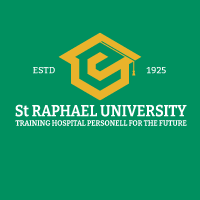GO TO
SPIRITUAL DOCTORS!
Non-Medical Doctors (or) Holistic Doctors!
A holistic doctor or practitioner is a healthcare professional who treats the whole person. When addressing health concerns, they consider physical, mental, emotional, and spiritual factors. Holistic practitioners use natural treatments, lifestyle changes, and alternative therapies to help patients. They also emphasize preventing health problems and working with patients to make decisions about their care.
Here are the high-level differences between medical doctors and holistic doctors:
| Aspect | Holistic Doctor | Medical Doctor |
|---|---|---|
| Approach | Whole-person, comprehensive approach | Conventional, symptom-focused approach |
| Diagnosis | Considers physical, mental, emotional, and spiritual factors | Primarily focused on physical factors |
| Treatment Options | Natural remedies, complementary therapies, lifestyle modifications | Pharmaceutical drugs, surgeries, specialist referrals |
| Preventive Care | Prioritizes prevention and overall health maintenance | Focuses on treating existing conditions and managing symptoms |
| Patient Involvement | Encourages active patient participation in decision-making | More traditional patient-doctor relationship |
| Focus | Addresses root causes of illness | Targets specific symptoms or conditions |

How To Become A Holistic Practitioner?
Becoming a holistic practitioner in the USA typically involves completing a formal education and obtaining licensure or certification in one’s chosen field of practice.
The specific educational requirements vary depending on the field but may include completing a degree or specialized training program and passing a licensing or certification examination.
It is important for aspiring holistic practitioners to thoroughly research the requirements in their chosen field and state of practice, as well as any continuing education requirements. Networking with other practitioners and gaining practical experience through internships or apprenticeships can also be beneficial in establishing a successful holistic practice.
Overall, becoming a holistic practitioner requires a commitment to ongoing learning and growth and a passion for helping others achieve optimal health and wellness through a holistic and integrative approach.
Here is a comprehensive list of alternative types of doctors (non-medical) or holistic practitioners or healthcare professionals.
SPECIALIZATIONS:
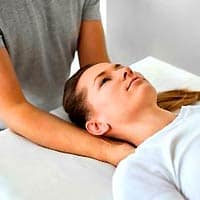 Acupressurist: Acupressurists are professionals who employ pressure on distinct points on the body to encourage recovery and relaxation. These experts help stabilize the body’s energy, known as “qi” by exerting pressure on these points, also recognized as acupoints.Such stabilization is believed to alleviate discomfort and cure a range of health disorders. Acupressure is a category of Traditional Chinese Medicine and is akin to acupuncture, although it does not entail using needles.
Acupressurist: Acupressurists are professionals who employ pressure on distinct points on the body to encourage recovery and relaxation. These experts help stabilize the body’s energy, known as “qi” by exerting pressure on these points, also recognized as acupoints.Such stabilization is believed to alleviate discomfort and cure a range of health disorders. Acupressure is a category of Traditional Chinese Medicine and is akin to acupuncture, although it does not entail using needles.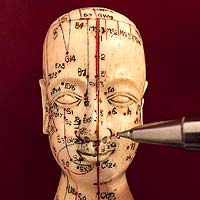 Acupuncturist: An acupuncturist is a trained healthcare professional who practices the concepts of Traditional Chinese Medicine (TCM) in the form of Acupuncture (using needles and herbal medicines).Acupuncturists are educated to diagnose various health problems such as pediatrics, gerontology, gynecology, various addictions (smoking, alcohol, and drug abuse), sports injury and pain management, mental health, oncology, dermatology, plus cosmetology.
Acupuncturist: An acupuncturist is a trained healthcare professional who practices the concepts of Traditional Chinese Medicine (TCM) in the form of Acupuncture (using needles and herbal medicines).Acupuncturists are educated to diagnose various health problems such as pediatrics, gerontology, gynecology, various addictions (smoking, alcohol, and drug abuse), sports injury and pain management, mental health, oncology, dermatology, plus cosmetology.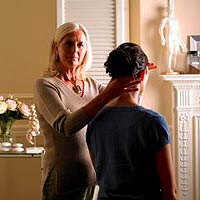 Alexander Technique Practitioner: Alexander Technique Professionals impart teachings to their clients on how to better their posture and movement patterns, thereby reducing strain, agony, and unease. This technique concentrates on helping individuals become more cognizant of their body and movement routines, empowering them to alter detrimental patterns and augment overall wellness.
Alexander Technique Practitioner: Alexander Technique Professionals impart teachings to their clients on how to better their posture and movement patterns, thereby reducing strain, agony, and unease. This technique concentrates on helping individuals become more cognizant of their body and movement routines, empowering them to alter detrimental patterns and augment overall wellness. Animal-Assisted Therapist: Animal-Assisted Therapists are mental health specialists who integrate animals like dogs, horses, or other species into their therapeutic approach. These therapists utilize the exceptional bond between humans and animals to help clients confront emotional, psychological, and physical predicaments.
Animal-Assisted Therapist: Animal-Assisted Therapists are mental health specialists who integrate animals like dogs, horses, or other species into their therapeutic approach. These therapists utilize the exceptional bond between humans and animals to help clients confront emotional, psychological, and physical predicaments.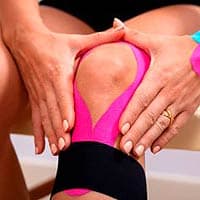 Applied Kinesiology Practitioner: Applied Kinesiology Practitioners employ muscle testing to evaluate energy disparities in the body and recognize the root causes of health ailments. These practitioners believe that muscle vigor is interconnected with the body’s organs and systems, and by examining muscle responses to diverse stimuli, they can identify and cure imbalances.
Applied Kinesiology Practitioner: Applied Kinesiology Practitioners employ muscle testing to evaluate energy disparities in the body and recognize the root causes of health ailments. These practitioners believe that muscle vigor is interconnected with the body’s organs and systems, and by examining muscle responses to diverse stimuli, they can identify and cure imbalances.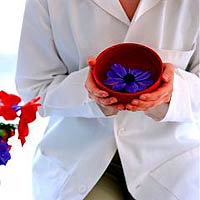 Aromatherapist: Aromatherapists utilize essential oils obtained from plants to foster physical, emotional, and mental wellness. These experts blend and apply these oils to mitigate a range of indications and disorders, like stress, anxiety, and inflammation. Aromatherapy can be employed in diverse modes, including inhalation, massage, and topical application.
Aromatherapist: Aromatherapists utilize essential oils obtained from plants to foster physical, emotional, and mental wellness. These experts blend and apply these oils to mitigate a range of indications and disorders, like stress, anxiety, and inflammation. Aromatherapy can be employed in diverse modes, including inhalation, massage, and topical application. Art Therapist: Art Therapists are mental health specialists who employ artistic expression as a therapeutic instrument to aid clients in exploring and processing emotions, thoughts, and experiences. They furnish a secure and encouraging milieu for clients to utilize diverse art materials and methods to express themselves, which can result in personal development, heightened self-awareness, and better mental health.
Art Therapist: Art Therapists are mental health specialists who employ artistic expression as a therapeutic instrument to aid clients in exploring and processing emotions, thoughts, and experiences. They furnish a secure and encouraging milieu for clients to utilize diverse art materials and methods to express themselves, which can result in personal development, heightened self-awareness, and better mental health.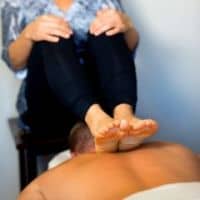 Ashiatsu Practitioner: Ashiatsu Practitioners perform deep tissue massage, using their feet to apply pressure to clients’ muscles, often supported by overhead bars. This technique allows for deep, broad pressure to help release muscle tension, increase flexibility, and improve circulation.
Ashiatsu Practitioner: Ashiatsu Practitioners perform deep tissue massage, using their feet to apply pressure to clients’ muscles, often supported by overhead bars. This technique allows for deep, broad pressure to help release muscle tension, increase flexibility, and improve circulation.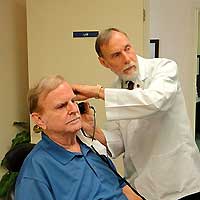 Audiologist: An audiologist specializes in the study of hearing, balance, and other auditory disorders. Primarily audiologists provide professional patient-centered care to minimize the adverse impacts of these diseases on the person’s physical, mental, social, and psychological well-being.
Audiologist: An audiologist specializes in the study of hearing, balance, and other auditory disorders. Primarily audiologists provide professional patient-centered care to minimize the adverse impacts of these diseases on the person’s physical, mental, social, and psychological well-being.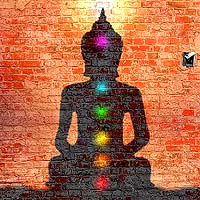 Ayurvedic Practitioner: Ayurveda is one of the world’s ancient healing systems (about 3000+ years old from India), considering the balance of the whole body rather than focusing on symptoms like Western medicines. The primary focus of Ayurveda is to promote well-being as a whole.An Ayurvedic doctor or practitioner studies the principles of Ayurveda and can identify the doshas (life forces – Vata, Pitta, and Kapha) and prescribe herbal medicines accordingly.
Ayurvedic Practitioner: Ayurveda is one of the world’s ancient healing systems (about 3000+ years old from India), considering the balance of the whole body rather than focusing on symptoms like Western medicines. The primary focus of Ayurveda is to promote well-being as a whole.An Ayurvedic doctor or practitioner studies the principles of Ayurveda and can identify the doshas (life forces – Vata, Pitta, and Kapha) and prescribe herbal medicines accordingly. Biodanza Facilitator: Biodanza Facilitators lead group, movement, and dance sessions to encourage self-expression, emotional release, and connection. Biodanza is a holistic approach to well-being that combines movement, music, and group exercises to help individuals improve their emotional health, enhance self-awareness, and foster social connections.
Biodanza Facilitator: Biodanza Facilitators lead group, movement, and dance sessions to encourage self-expression, emotional release, and connection. Biodanza is a holistic approach to well-being that combines movement, music, and group exercises to help individuals improve their emotional health, enhance self-awareness, and foster social connections.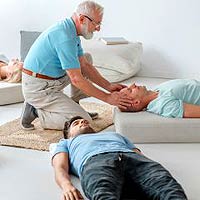 Bioenergetic Therapist: Bioenergetic Therapists are experts in body-centered psychotherapy that prioritizes the interrelation between the body, mind, and emotions. These practitioners believe that unsettled emotional predicaments can present as physical tension and that by working with the body, they can assist clients in releasing these strains and enhancing their overall wellness.Techniques employed in bioenergetic therapy may comprise breathing exercises, movement, and physical touch to explore and resolve emotional hindrances.
Bioenergetic Therapist: Bioenergetic Therapists are experts in body-centered psychotherapy that prioritizes the interrelation between the body, mind, and emotions. These practitioners believe that unsettled emotional predicaments can present as physical tension and that by working with the body, they can assist clients in releasing these strains and enhancing their overall wellness.Techniques employed in bioenergetic therapy may comprise breathing exercises, movement, and physical touch to explore and resolve emotional hindrances.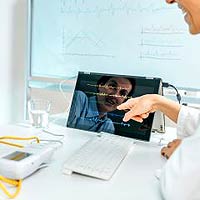 Biofeedback Therapist: Biofeedback Therapists operate specialized equipment to monitor and furnish feedback on clients’ physiological functions, such as heart rate, muscle tension, and skin temperature. By aiding clients in becoming more cognizant of these processes, they can acquire skills to control and manage them, leading to better health and wellness.
Biofeedback Therapist: Biofeedback Therapists operate specialized equipment to monitor and furnish feedback on clients’ physiological functions, such as heart rate, muscle tension, and skin temperature. By aiding clients in becoming more cognizant of these processes, they can acquire skills to control and manage them, leading to better health and wellness.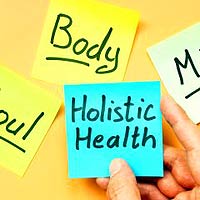 BodyTalk Practitioner: BodyTalk practitioners utilize a comprehensive approach to tackle physical, emotional, and mental imbalances in the body. They trust in the inherent ability of the body to self-heal. The body can restore communication between its systems and promote self-healing through muscle testing and tapping techniques.
BodyTalk Practitioner: BodyTalk practitioners utilize a comprehensive approach to tackle physical, emotional, and mental imbalances in the body. They trust in the inherent ability of the body to self-heal. The body can restore communication between its systems and promote self-healing through muscle testing and tapping techniques.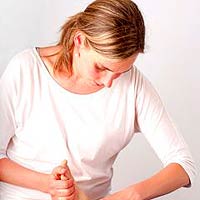 Bowen Therapist: Bowen therapists use soft touches and careful moves on muscles, stretchy parts, and nerves to help heal, calm people, and remove pain. The Bowen way is a safe way to help the body heal by working on the parts connecting everything and the system that helps us feel things. It can help with problems like muscle pain, stress, and tummy troubles.
Bowen Therapist: Bowen therapists use soft touches and careful moves on muscles, stretchy parts, and nerves to help heal, calm people, and remove pain. The Bowen way is a safe way to help the body heal by working on the parts connecting everything and the system that helps us feel things. It can help with problems like muscle pain, stress, and tummy troubles.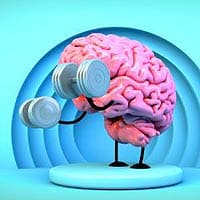 Brain Gym Practitioner: Brain Gym practitioners educate their clients on a sequence of movement-based exercises aimed to enhance cognitive function, learning abilities, and overall well-being. These exercises are grounded in the notion that integrating the body and mind can amplify mental performance and reduce stress.Brain Gym therapy can benefit individuals of all ages, including children with learning difficulties, adults seeking to enhance cognitive function, and seniors seeking to sustain mental acuity.
Brain Gym Practitioner: Brain Gym practitioners educate their clients on a sequence of movement-based exercises aimed to enhance cognitive function, learning abilities, and overall well-being. These exercises are grounded in the notion that integrating the body and mind can amplify mental performance and reduce stress.Brain Gym therapy can benefit individuals of all ages, including children with learning difficulties, adults seeking to enhance cognitive function, and seniors seeking to sustain mental acuity. Breathwork Practitioner: Breathwork practitioners guide clients through various breathing techniques and exercises to promote relaxation, emotional release, and self-awareness. By altering the breath’s rhythm and depth, clients can access altered states of consciousness, release stored emotions, and gain insight into their personal growth and healing.
Breathwork Practitioner: Breathwork practitioners guide clients through various breathing techniques and exercises to promote relaxation, emotional release, and self-awareness. By altering the breath’s rhythm and depth, clients can access altered states of consciousness, release stored emotions, and gain insight into their personal growth and healing. Castellino Prenatal and Birth Training Practitioner: Castellino Prenatal and Birth Training Practitioners utilize a tender, hands-on method to assist pregnant women and their babies throughout the prenatal and birth journey. This therapy focuses on addressing physical and emotional traumas, fostering a strong bond between mother and baby, and improving overall well-being for both parties.
Castellino Prenatal and Birth Training Practitioner: Castellino Prenatal and Birth Training Practitioners utilize a tender, hands-on method to assist pregnant women and their babies throughout the prenatal and birth journey. This therapy focuses on addressing physical and emotional traumas, fostering a strong bond between mother and baby, and improving overall well-being for both parties.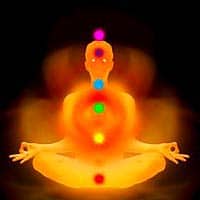 Chakra Balancing Practitioner: Chakra-balancing experts utilize complex methods to interact with the body’s chakras, energy centers that regulate one’s balance, remediation, and comprehensive well-being. These techniques encompass meditation, visualization, and tactile energy manipulation, all aiming to rid the body of obstacles and synchronize the energy flow.
Chakra Balancing Practitioner: Chakra-balancing experts utilize complex methods to interact with the body’s chakras, energy centers that regulate one’s balance, remediation, and comprehensive well-being. These techniques encompass meditation, visualization, and tactile energy manipulation, all aiming to rid the body of obstacles and synchronize the energy flow.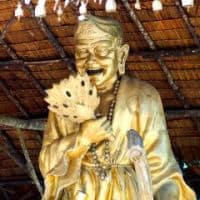 Chigong Practitioner: Chigong Practitioners teach clients gentle exercises, meditation, and breathing techniques rooted in ancient Chinese practices. Chigong aims to cultivate and balance the body’s vital energy, or “qi” promoting relaxation, stress reduction, and overall well-being.
Chigong Practitioner: Chigong Practitioners teach clients gentle exercises, meditation, and breathing techniques rooted in ancient Chinese practices. Chigong aims to cultivate and balance the body’s vital energy, or “qi” promoting relaxation, stress reduction, and overall well-being.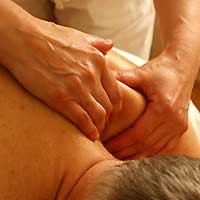 Chiropractor: A chiropractor specializes in diagnosing and treating neuromuscular disorders. Unlike regular neurologists or neurosurgeons, chiropractors treat patients through manual manipulation and adjustment of the spine. Chiropractors focus on the conservative management of the neuromusculoskeletal system without the use of any medicines or surgery, however, with specific importance on the spine. Chiropractors typically treat low-back and neck pain issues by adjustments to the spinal cord.
Chiropractor: A chiropractor specializes in diagnosing and treating neuromuscular disorders. Unlike regular neurologists or neurosurgeons, chiropractors treat patients through manual manipulation and adjustment of the spine. Chiropractors focus on the conservative management of the neuromusculoskeletal system without the use of any medicines or surgery, however, with specific importance on the spine. Chiropractors typically treat low-back and neck pain issues by adjustments to the spinal cord.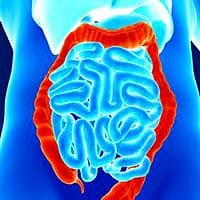 Colon Hydrotherapist: Colon hydrotherapists, who are also referred to as colonic therapists, utilize a delicate approach to clean the colon with filtered, lukewarm water to remove any built-up waste and toxins. This technique enhances digestion, increases energy levels, and promotes overall health.
Colon Hydrotherapist: Colon hydrotherapists, who are also referred to as colonic therapists, utilize a delicate approach to clean the colon with filtered, lukewarm water to remove any built-up waste and toxins. This technique enhances digestion, increases energy levels, and promotes overall health.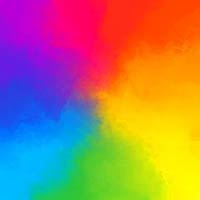 Color Therapist: Color therapists use the principles of color therapy, also known as chromotherapy, to promote healing and well-being. They believe that different colors have specific therapeutic properties and can be used to address various physical, emotional, and mental imbalances. Techniques used in color therapy may include visualization, color-infused environments, and colored light, fabrics, or gemstones.
Color Therapist: Color therapists use the principles of color therapy, also known as chromotherapy, to promote healing and well-being. They believe that different colors have specific therapeutic properties and can be used to address various physical, emotional, and mental imbalances. Techniques used in color therapy may include visualization, color-infused environments, and colored light, fabrics, or gemstones. Core Energetics Practitioner: Professionals in Core Energetics are educated in a body-centered form of psychotherapy that unifies the body, mind, and emotions. Their arsenal of techniques encompasses movement, breathing, and tactile stimulation to facilitate the release of suppressed emotions and foster exploration of the correlation between one’s physical and emotional encounters.
Core Energetics Practitioner: Professionals in Core Energetics are educated in a body-centered form of psychotherapy that unifies the body, mind, and emotions. Their arsenal of techniques encompasses movement, breathing, and tactile stimulation to facilitate the release of suppressed emotions and foster exploration of the correlation between one’s physical and emotional encounters.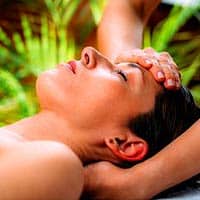 Craniosacral Therapist: Practitioners of craniosacral therapy rely on tender, non-intrusive touch to relieve strain and blockages in the craniosacral system – a network encompassing the skull, spine, and sacrum. This therapy encourages the uninhibited flow of cerebrospinal fluid and balances the system, thereby boosting overall health and well-being.
Craniosacral Therapist: Practitioners of craniosacral therapy rely on tender, non-intrusive touch to relieve strain and blockages in the craniosacral system – a network encompassing the skull, spine, and sacrum. This therapy encourages the uninhibited flow of cerebrospinal fluid and balances the system, thereby boosting overall health and well-being.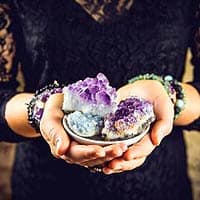 Crystal Healer: Crystal healers utilize the inherent energy of crystals and gemstones to facilitate balance and remediation of the body, mind, and spirit. It is their conviction that each crystal harbors unique properties that can be used to target specific concerns or imbalances. Crystal healing techniques may include the application of stones on the body, integrating them into meditation, or wearing them as accessories.
Crystal Healer: Crystal healers utilize the inherent energy of crystals and gemstones to facilitate balance and remediation of the body, mind, and spirit. It is their conviction that each crystal harbors unique properties that can be used to target specific concerns or imbalances. Crystal healing techniques may include the application of stones on the body, integrating them into meditation, or wearing them as accessories.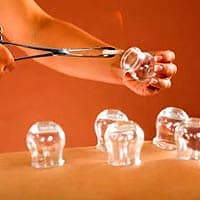 Cupping Therapist: Therapists specializing in cupping employ a methodology that involves using cups, generally made of plastic, glass, or silicone, on the skin to generate suction. This practice is believed to amplify blood circulation, trigger relaxation, and rid the body of harmful toxins.
Cupping Therapist: Therapists specializing in cupping employ a methodology that involves using cups, generally made of plastic, glass, or silicone, on the skin to generate suction. This practice is believed to amplify blood circulation, trigger relaxation, and rid the body of harmful toxins. Diagnostician: A Diagnostician is also referred to as a medical diagnostician who studies the medical symptoms and reports of patients to diagnose the disease. Diagnosticians generally use different methods with modifications such as logic, data analytics, and expertise to determine the cause and effect of diseases. Diagnosticians use the computer science network & technology and mathematics & logic in the process.
Diagnostician: A Diagnostician is also referred to as a medical diagnostician who studies the medical symptoms and reports of patients to diagnose the disease. Diagnosticians generally use different methods with modifications such as logic, data analytics, and expertise to determine the cause and effect of diseases. Diagnosticians use the computer science network & technology and mathematics & logic in the process.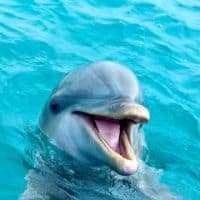 Dolphin-assisted Therapist: Dolphin-assisted Therapists use interactions with dolphins as therapy, often for individuals with physical, emotional, or cognitive challenges. The unique characteristics of dolphins, such as their intelligence and social nature, can provide therapeutic benefits like stress reduction, increased motivation, and improved communication skills.
Dolphin-assisted Therapist: Dolphin-assisted Therapists use interactions with dolphins as therapy, often for individuals with physical, emotional, or cognitive challenges. The unique characteristics of dolphins, such as their intelligence and social nature, can provide therapeutic benefits like stress reduction, increased motivation, and improved communication skills.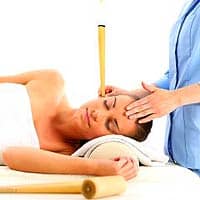 Ear Candling Practitioner: Ear candling practitioners use a technique that involves inserting a cone-shaped candle into the ear canal and igniting the opposite end. This process is thought to create a gentle suction that helps to eliminate earwax, debris, and toxins. Ear candling can address problems like excessive earwax, sinus issues, and tinnitus. However, it is essential to note that medical experts widely debate the effectiveness and safety of ear candling.
Ear Candling Practitioner: Ear candling practitioners use a technique that involves inserting a cone-shaped candle into the ear canal and igniting the opposite end. This process is thought to create a gentle suction that helps to eliminate earwax, debris, and toxins. Ear candling can address problems like excessive earwax, sinus issues, and tinnitus. However, it is essential to note that medical experts widely debate the effectiveness and safety of ear candling.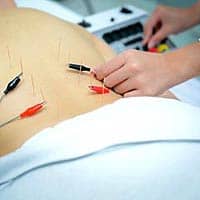 Electroacupuncture Practitioner: Electroacupuncture practitioners apply a type of acupuncture that involves administering a slight electric current to acupuncture needles. This technique is thought to improve the results of conventional acupuncture by providing constant stimulation to particular points in the body. Electroacupuncture can be employed to tackle several issues, such as pain, inflammation, and neurological disorders.
Electroacupuncture Practitioner: Electroacupuncture practitioners apply a type of acupuncture that involves administering a slight electric current to acupuncture needles. This technique is thought to improve the results of conventional acupuncture by providing constant stimulation to particular points in the body. Electroacupuncture can be employed to tackle several issues, such as pain, inflammation, and neurological disorders.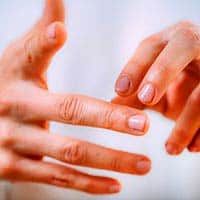 Emotional Freedom Technique Practitioner: Emotional Freedom Technique (EFT) practitioners assist clients through a process that involves tapping on particular acupressure points while concentrating on an emotional issue or physical discomfort. This technique, also called “tapping” aims to help relieve negative emotions, decrease stress, and encourage healing. EFT can benefit individuals experiencing anxiety, trauma, pain, and other emotional challenges.
Emotional Freedom Technique Practitioner: Emotional Freedom Technique (EFT) practitioners assist clients through a process that involves tapping on particular acupressure points while concentrating on an emotional issue or physical discomfort. This technique, also called “tapping” aims to help relieve negative emotions, decrease stress, and encourage healing. EFT can benefit individuals experiencing anxiety, trauma, pain, and other emotional challenges.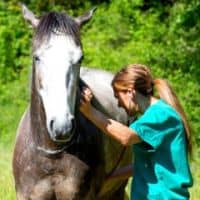 Equine-assisted Psychotherapist: Equine-assisted Psychotherapists incorporate horses into therapy sessions, using interactions with the animals to help clients address emotional, psychological, and behavioral issues. Horses’ sensitivity to nonverbal communication and social dynamics can provide valuable insights and promote personal growth in clients.
Equine-assisted Psychotherapist: Equine-assisted Psychotherapists incorporate horses into therapy sessions, using interactions with the animals to help clients address emotional, psychological, and behavioral issues. Horses’ sensitivity to nonverbal communication and social dynamics can provide valuable insights and promote personal growth in clients.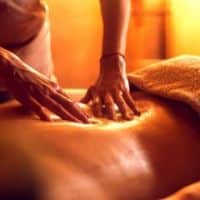 Esalen Massage Therapist: Esalen Massage Therapists perform a unique form of massage incorporating long, flowing strokes, gentle rocking, stretching, and joint mobilization. This therapy aims to promote relaxation, increase body awareness, and release physical and emotional tension.
Esalen Massage Therapist: Esalen Massage Therapists perform a unique form of massage incorporating long, flowing strokes, gentle rocking, stretching, and joint mobilization. This therapy aims to promote relaxation, increase body awareness, and release physical and emotional tension.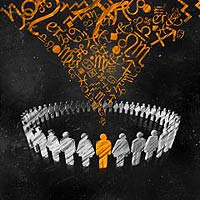 Family Constellations Facilitator: Family Constellations facilitators guide clients through an experiential process to explore and heal family dynamics and unresolved issues. They use a combination of dialogue, movement, and role-playing to reveal hidden patterns and help clients gain new insights into their relationships.
Family Constellations Facilitator: Family Constellations facilitators guide clients through an experiential process to explore and heal family dynamics and unresolved issues. They use a combination of dialogue, movement, and role-playing to reveal hidden patterns and help clients gain new insights into their relationships.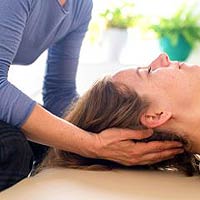 Feldenkrais Method Practitioner: Feldenkrais Method practitioners utilize gentle movement exercises and body awareness techniques to assist clients in improving their posture, flexibility, and overall body function. This method is intended to enhance self-awareness, decrease pain, and improve well-being by examining movement patterns and habits.
Feldenkrais Method Practitioner: Feldenkrais Method practitioners utilize gentle movement exercises and body awareness techniques to assist clients in improving their posture, flexibility, and overall body function. This method is intended to enhance self-awareness, decrease pain, and improve well-being by examining movement patterns and habits. Flower Essence Therapist: Flower essence therapists use liquid extracts of various flowers and plants to promote emotional and mental balance. They believe each flower essence has specific properties that can help address emotional imbalances or challenges. Flower essences are typically taken orally or applied topically and can be used alongside other therapies to support emotional well-being.
Flower Essence Therapist: Flower essence therapists use liquid extracts of various flowers and plants to promote emotional and mental balance. They believe each flower essence has specific properties that can help address emotional imbalances or challenges. Flower essences are typically taken orally or applied topically and can be used alongside other therapies to support emotional well-being. Guided Imagery Therapist: Guided Imagery therapists utilize visualization techniques to assist clients in accessing their inner resources, inducing relaxation, and promoting healing. By leading clients through vivid mental images and scenarios, they help access the subconscious mind’s potential to aid emotional and physical well-being.
Guided Imagery Therapist: Guided Imagery therapists utilize visualization techniques to assist clients in accessing their inner resources, inducing relaxation, and promoting healing. By leading clients through vivid mental images and scenarios, they help access the subconscious mind’s potential to aid emotional and physical well-being. Hakomi Therapist: Hakomi therapists use body-centered psychotherapy that blends mindfulness, somatic awareness, and experiential techniques to promote self-discovery and healing. They collaborate with clients to examine the relationship between the mind and body and reveal the unconscious beliefs and patterns that may contribute to emotional or physical difficulties.
Hakomi Therapist: Hakomi therapists use body-centered psychotherapy that blends mindfulness, somatic awareness, and experiential techniques to promote self-discovery and healing. They collaborate with clients to examine the relationship between the mind and body and reveal the unconscious beliefs and patterns that may contribute to emotional or physical difficulties.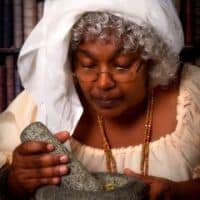 Herbalist: Herbalists rely on plants and plant extracts to boost health and wellness. They possess a wealth of knowledge about the medicinal qualities of different herbs and can create personalized herbal blends to tackle specific health issues or imbalances. Herbalists can offer guidance on using herbs to address various problems, such as digestive issues, stress, and immune system support.
Herbalist: Herbalists rely on plants and plant extracts to boost health and wellness. They possess a wealth of knowledge about the medicinal qualities of different herbs and can create personalized herbal blends to tackle specific health issues or imbalances. Herbalists can offer guidance on using herbs to address various problems, such as digestive issues, stress, and immune system support. Holotropic Breathwork Practitioner: Holotropic Breathwork practitioners guide clients through a powerful breathing technique to facilitate deep self-exploration, emotional release, and personal transformation. This process involves rapid, deep breathing, evocative music, and supportive bodywork.
Holotropic Breathwork Practitioner: Holotropic Breathwork practitioners guide clients through a powerful breathing technique to facilitate deep self-exploration, emotional release, and personal transformation. This process involves rapid, deep breathing, evocative music, and supportive bodywork. Homeopathic Doctor: Homeopathy is also one of the holistic healing systems similar to Ayurveda.
Homeopathic Doctor: Homeopathy is also one of the holistic healing systems similar to Ayurveda.
Homeopathy considers the body, mind, spirit, and feelings of the patient to prescribe plant-based medicines (herbs) which stimulate the body’s healing abilities. The homeopathic doctor is very similar to a conventional doctor who listens, examines, analyzes the patient’s symptoms, and prepares unique medicines tailored to address the patient’s problems.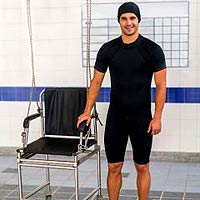 Hydrotherapist: Hydrotherapists utilize water in different forms, like steam, ice, or mineral baths, to boost health and wellness. They believe that water’s distinct properties can aid in detoxifying the body, enhancing circulation, and reducing pain.In addition, hydrotherapy can also be employed to tackle various concerns, such as joint pain, muscle tension, and stress.
Hydrotherapist: Hydrotherapists utilize water in different forms, like steam, ice, or mineral baths, to boost health and wellness. They believe that water’s distinct properties can aid in detoxifying the body, enhancing circulation, and reducing pain.In addition, hydrotherapy can also be employed to tackle various concerns, such as joint pain, muscle tension, and stress.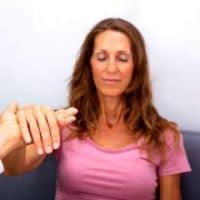 Hypnotherapist: Hypnotherapists use hypnosis, a state of deep relaxation and focused attention, to help clients access their subconscious minds and make positive changes in their lives.They guide clients through various techniques, such as guided imagery, positive suggestions, and regression therapy, to address various issues, including smoking cessation, weight loss, anxiety, and phobias.
Hypnotherapist: Hypnotherapists use hypnosis, a state of deep relaxation and focused attention, to help clients access their subconscious minds and make positive changes in their lives.They guide clients through various techniques, such as guided imagery, positive suggestions, and regression therapy, to address various issues, including smoking cessation, weight loss, anxiety, and phobias. Integrative Body Psychotherapy Practitioner: Integrative Body Psychotherapy practitioners adopt a holistic approach to therapy that merges talk therapy, body awareness, and energy work to address emotional, physical, and psychological issues. They trust that the body retains memories and emotions. By collaborating with the body, they can aid clients in releasing unresolved problems and attaining a greater sense of well-being.
Integrative Body Psychotherapy Practitioner: Integrative Body Psychotherapy practitioners adopt a holistic approach to therapy that merges talk therapy, body awareness, and energy work to address emotional, physical, and psychological issues. They trust that the body retains memories and emotions. By collaborating with the body, they can aid clients in releasing unresolved problems and attaining a greater sense of well-being.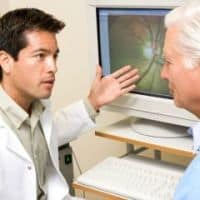 Iridologist: Iridologists study the patterns, colors, and other characteristics of the iris to gain insights into a person’s overall health and wellness. They believe the iris can reveal information about various bodily systems and potential health issues. While iridology is not a diagnostic tool, it can guide areas requiring further attention or lifestyle changes.
Iridologist: Iridologists study the patterns, colors, and other characteristics of the iris to gain insights into a person’s overall health and wellness. They believe the iris can reveal information about various bodily systems and potential health issues. While iridology is not a diagnostic tool, it can guide areas requiring further attention or lifestyle changes.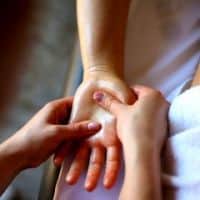 Jin Shin Do Practitioner: Jin Shin Do practitioners use a combination of acupressure and body-centered therapy to promote relaxation, release tension, and balance the body’s energy. They apply gentle pressure to specific points on the body, following meridians and energy pathways, to stimulate healing and restore balance.
Jin Shin Do Practitioner: Jin Shin Do practitioners use a combination of acupressure and body-centered therapy to promote relaxation, release tension, and balance the body’s energy. They apply gentle pressure to specific points on the body, following meridians and energy pathways, to stimulate healing and restore balance.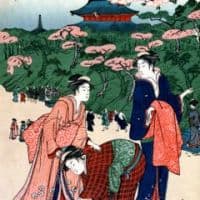 Jin Shin Jyutsu Practitioner: Jin Shin Jyutsu practitioners utilize an ancient Japanese healing art that gently applies hands-on specific body points to harmonize and balance the body’s energy. They believe balancing the body’s energy can promote well-being and address various physical, emotional, and mental issues.
Jin Shin Jyutsu Practitioner: Jin Shin Jyutsu practitioners utilize an ancient Japanese healing art that gently applies hands-on specific body points to harmonize and balance the body’s energy. They believe balancing the body’s energy can promote well-being and address various physical, emotional, and mental issues. Jungian Analyst: Jungian analysts are psychotherapists who specialize in the theories and methods of Carl Jung. They work with clients to explore the unconscious mind, dreams, symbols, and archetypes to promote personal growth, self-understanding, and psychological healing.
Jungian Analyst: Jungian analysts are psychotherapists who specialize in the theories and methods of Carl Jung. They work with clients to explore the unconscious mind, dreams, symbols, and archetypes to promote personal growth, self-understanding, and psychological healing. Kabbalistic Healing Practitioner: Kabbalistic Healing Practitioners draw upon principles from the mystical Kabbalah tradition to facilitate healing and personal development. They may use meditation, visualization, and energy work techniques to help clients tap into their inner wisdom, tackle emotional challenges, and attain a heightened sense of balance and well-being.
Kabbalistic Healing Practitioner: Kabbalistic Healing Practitioners draw upon principles from the mystical Kabbalah tradition to facilitate healing and personal development. They may use meditation, visualization, and energy work techniques to help clients tap into their inner wisdom, tackle emotional challenges, and attain a heightened sense of balance and well-being.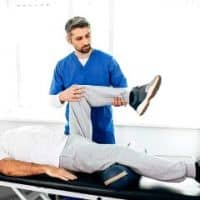 Kinesiologist: Kinesiologists specialize in analyzing human movement and biomechanics. They collaborate with clients to evaluate, treat, and prevent movement-related problems like muscle imbalances, joint dysfunction, and poor posture. Kinesiologists may employ various techniques like exercise prescription, manual therapy, and movement education to assist clients in enhancing their overall health, fitness, and performance.
Kinesiologist: Kinesiologists specialize in analyzing human movement and biomechanics. They collaborate with clients to evaluate, treat, and prevent movement-related problems like muscle imbalances, joint dysfunction, and poor posture. Kinesiologists may employ various techniques like exercise prescription, manual therapy, and movement education to assist clients in enhancing their overall health, fitness, and performance.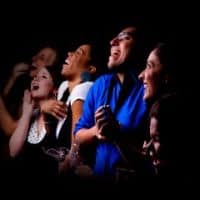 Laughter Therapist: Laughter therapists use the power of laughter to promote physical, emotional, and mental well-being. They lead clients through various laughter exercises, games, and techniques to stimulate laughter, reduce stress, and encourage a positive outlook.
Laughter Therapist: Laughter therapists use the power of laughter to promote physical, emotional, and mental well-being. They lead clients through various laughter exercises, games, and techniques to stimulate laughter, reduce stress, and encourage a positive outlook.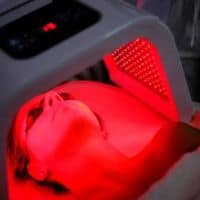 Light Therapist: Light therapists utilize different forms of light and color to enhance healing, balance energy, and promote overall well-being. Techniques may include exposure to particular light wavelengths, colored light filters, or light-emitting devices placed on the body.
Light Therapist: Light therapists utilize different forms of light and color to enhance healing, balance energy, and promote overall well-being. Techniques may include exposure to particular light wavelengths, colored light filters, or light-emitting devices placed on the body. Lomi Lomi Practitioner Lomi Lomi practitioners perform a traditional Hawaiian massage incorporating rhythmic, flowing strokes and techniques to promote relaxation, release tension, and facilitate healing. They may also use prayer, breathwork, and energy work in the session.
Lomi Lomi Practitioner Lomi Lomi practitioners perform a traditional Hawaiian massage incorporating rhythmic, flowing strokes and techniques to promote relaxation, release tension, and facilitate healing. They may also use prayer, breathwork, and energy work in the session.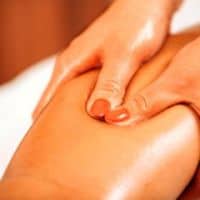 Lymphatic Drainage Therapist: Lymphatic Drainage Therapists specialize in a gentle massage technique that helps stimulate the flow of lymphatic fluid and support the immune system. By promoting the movement of lymph, they can help reduce swelling, detoxify the body, and enhance overall well-being.
Lymphatic Drainage Therapist: Lymphatic Drainage Therapists specialize in a gentle massage technique that helps stimulate the flow of lymphatic fluid and support the immune system. By promoting the movement of lymph, they can help reduce swelling, detoxify the body, and enhance overall well-being. M Technique Practitioner: M Technique Practitioners use gentle, structured touch therapy to soothe and relax clients. The technique involves a series of stroking and pressure movements, which can help reduce stress, promote relaxation, and comfort individuals facing various physical or emotional challenges.
M Technique Practitioner: M Technique Practitioners use gentle, structured touch therapy to soothe and relax clients. The technique involves a series of stroking and pressure movements, which can help reduce stress, promote relaxation, and comfort individuals facing various physical or emotional challenges. Macrobiotic Counselor: Macrobiotic Counselors guide clients in adopting a macrobiotic diet and lifestyle, emphasizing whole, natural foods and a balanced approach to eating. They provide personalized recommendations on food choices, meal planning, and cooking techniques to support clients’ overall health and well-being.
Macrobiotic Counselor: Macrobiotic Counselors guide clients in adopting a macrobiotic diet and lifestyle, emphasizing whole, natural foods and a balanced approach to eating. They provide personalized recommendations on food choices, meal planning, and cooking techniques to support clients’ overall health and well-being.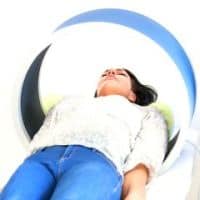 Magnetic Field Therapist: Magnetic Field Therapists use magnetic fields from static magnets or pulsed electromagnetic devices to encourage healing and overall well-being. They trust that magnetic fields can stimulate cellular function, decrease inflammation, and relieve pain.
Magnetic Field Therapist: Magnetic Field Therapists use magnetic fields from static magnets or pulsed electromagnetic devices to encourage healing and overall well-being. They trust that magnetic fields can stimulate cellular function, decrease inflammation, and relieve pain.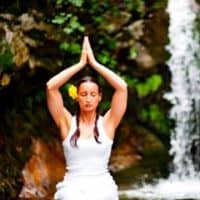 Medical Intuitive: Medical Intuitives use their intuitive abilities to assess a client’s physical, emotional, and energetic well-being. They may provide insights into underlying imbalances or issues and recommend complementary therapies or lifestyle changes to support healing. While medical intuitives do not diagnose or treat medical conditions, they can provide guidance and support in conjunction with conventional healthcare.
Medical Intuitive: Medical Intuitives use their intuitive abilities to assess a client’s physical, emotional, and energetic well-being. They may provide insights into underlying imbalances or issues and recommend complementary therapies or lifestyle changes to support healing. While medical intuitives do not diagnose or treat medical conditions, they can provide guidance and support in conjunction with conventional healthcare. Meditation Instructor: Meditation Instructors teach diverse meditation techniques and practices to aid clients in cultivating greater self-awareness, reducing stress, and enhancing overall well-being. They may provide guided meditation sessions, mindfulness exercises, or specific traditions like transcendental meditation or Zen.
Meditation Instructor: Meditation Instructors teach diverse meditation techniques and practices to aid clients in cultivating greater self-awareness, reducing stress, and enhancing overall well-being. They may provide guided meditation sessions, mindfulness exercises, or specific traditions like transcendental meditation or Zen.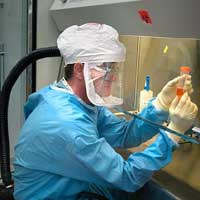 Microbiologist: Microbiologists are scientists or clinicians who study and examine the growth of microorganisms like bacteria, viruses, and fungi and their interactions with the human body to find the pathogens that harm the body and determine the proper treatment for the disease. Microbiologists typically work on experimental research projects in a laboratory setting to improve scientific knowledge or to employ that understanding to improve outcomes in the medical industry.
Microbiologist: Microbiologists are scientists or clinicians who study and examine the growth of microorganisms like bacteria, viruses, and fungi and their interactions with the human body to find the pathogens that harm the body and determine the proper treatment for the disease. Microbiologists typically work on experimental research projects in a laboratory setting to improve scientific knowledge or to employ that understanding to improve outcomes in the medical industry.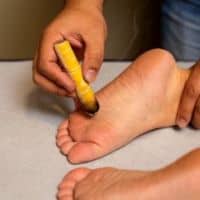 Moxibustion Practitioner: Moxibustion Practitioners employ a traditional Chinese medicine method that entails burning the herb mugwort near specific acupuncture points on the body. This practice is believed to enhance circulation, promote healing, and augment the flow of vital energy or “qi“. Moxibustion can tackle several conditions, such as pain, digestive issues, and reproductive health concerns.
Moxibustion Practitioner: Moxibustion Practitioners employ a traditional Chinese medicine method that entails burning the herb mugwort near specific acupuncture points on the body. This practice is believed to enhance circulation, promote healing, and augment the flow of vital energy or “qi“. Moxibustion can tackle several conditions, such as pain, digestive issues, and reproductive health concerns. Music Therapist: Music Therapists use music-centered interventions to address clients’ physical, emotional, cognitive, and social needs. They may use active techniques like playing instruments or singing or receptive techniques like listening to music or analyzing lyrics.
Music Therapist: Music Therapists use music-centered interventions to address clients’ physical, emotional, cognitive, and social needs. They may use active techniques like playing instruments or singing or receptive techniques like listening to music or analyzing lyrics. Myofascial Release Therapist: Myofascial Release Therapists employ hands-on techniques to manipulate and stretch the fascia, the connective tissue that envelops muscles and organs in the body. Freeing restrictions and tension in the fascia can help reduce pain, improve mobility, and enhance overall well-being.
Myofascial Release Therapist: Myofascial Release Therapists employ hands-on techniques to manipulate and stretch the fascia, the connective tissue that envelops muscles and organs in the body. Freeing restrictions and tension in the fascia can help reduce pain, improve mobility, and enhance overall well-being. Naturopathic Doctor: A naturopathic doctor (ND) is very similar to Ayurveda and Homeopathy, who focuses on the holistic healing system. ND helps to facilitate the body’s natural healing abilities to restore balance. Naturopathic physicians generally operate in private clinics, hospitals, and other community health centers. One who wishes to become an ND should complete a 4-year degree program from a recognized naturopathic medical school. NDs handle various medical conditions and can give individual and family health care. Naturopathic medicine is used for many common problems, such as allergies, chronic pain, digestive issues, hormonal imbalances, respiratory conditions, etc.
Naturopathic Doctor: A naturopathic doctor (ND) is very similar to Ayurveda and Homeopathy, who focuses on the holistic healing system. ND helps to facilitate the body’s natural healing abilities to restore balance. Naturopathic physicians generally operate in private clinics, hospitals, and other community health centers. One who wishes to become an ND should complete a 4-year degree program from a recognized naturopathic medical school. NDs handle various medical conditions and can give individual and family health care. Naturopathic medicine is used for many common problems, such as allergies, chronic pain, digestive issues, hormonal imbalances, respiratory conditions, etc.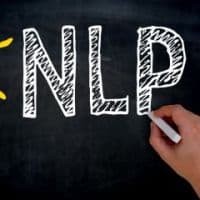 Neuro-Linguistic Programming Practitioner: (NLP)NLP Practitioners use psychological techniques and communication strategies to help clients modify their thoughts, behaviors, and emotions. They focus on understanding the relationship between language, thought patterns, and behavior to facilitate personal growth and transformation.
Neuro-Linguistic Programming Practitioner: (NLP)NLP Practitioners use psychological techniques and communication strategies to help clients modify their thoughts, behaviors, and emotions. They focus on understanding the relationship between language, thought patterns, and behavior to facilitate personal growth and transformation.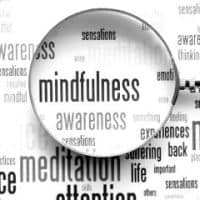 Nia Instructor: Nia Instructors teach a holistic fitness practice combining dance, martial arts, and mindfulness. They guide students through choreographed movement patterns that promote physical conditioning, emotional expression, and mental clarity.
Nia Instructor: Nia Instructors teach a holistic fitness practice combining dance, martial arts, and mindfulness. They guide students through choreographed movement patterns that promote physical conditioning, emotional expression, and mental clarity.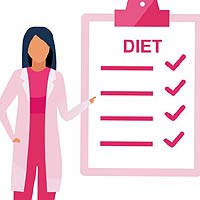 Nutritionist: Unlike dietitians, qualified medical doctors who diagnose and treat eating disorders and design specific diets to treat certain medical conditions, nutritionists deal with general nutritional goals and education. Nutritionists often work in schools, hospitals, cafeterias, long-term care facilities, and athletic organizations.
Nutritionist: Unlike dietitians, qualified medical doctors who diagnose and treat eating disorders and design specific diets to treat certain medical conditions, nutritionists deal with general nutritional goals and education. Nutritionists often work in schools, hospitals, cafeterias, long-term care facilities, and athletic organizations.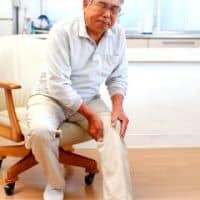 Ortho-Bionomy Practitioner: Ortho-Bionomy Practitioners use gentle, non-invasive techniques to help clients release pain, tension, and structural imbalances. They focus on guiding the body into positions of comfort, allowing it to correct itself and find balance naturally.
Ortho-Bionomy Practitioner: Ortho-Bionomy Practitioners use gentle, non-invasive techniques to help clients release pain, tension, and structural imbalances. They focus on guiding the body into positions of comfort, allowing it to correct itself and find balance naturally. Orthomolecular Medicine Practitioner: Orthomolecular Medicine Practitioners focus on optimizing health by using vitamins, minerals, amino acids, and other natural substances. They aim to correct imbalances and deficiencies within the body, addressing various health issues and promoting overall well-being.
Orthomolecular Medicine Practitioner: Orthomolecular Medicine Practitioners focus on optimizing health by using vitamins, minerals, amino acids, and other natural substances. They aim to correct imbalances and deficiencies within the body, addressing various health issues and promoting overall well-being.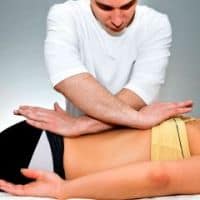 Osteopathic Manual Practitioner: Osteopathic Manual Practitioners utilize hands-on techniques, including soft tissue manipulation, joint mobilization, and stretching, to tackle structural imbalances and promote overall health. They concentrate on the correlation between the body’s structure and function and strive to re-establish balance and alignment.
Osteopathic Manual Practitioner: Osteopathic Manual Practitioners utilize hands-on techniques, including soft tissue manipulation, joint mobilization, and stretching, to tackle structural imbalances and promote overall health. They concentrate on the correlation between the body’s structure and function and strive to re-establish balance and alignment.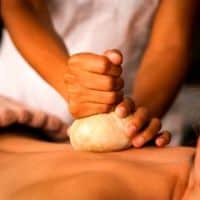 Panchakarma Practitioner: Panchakarma Practitioners specialize in a traditional Ayurvedic detoxification and rejuvenation program. They use a combination of cleansing practices, herbal treatments, and dietary recommendations to help clients purify their bodies, restore balance, and enhance overall well-being.
Panchakarma Practitioner: Panchakarma Practitioners specialize in a traditional Ayurvedic detoxification and rejuvenation program. They use a combination of cleansing practices, herbal treatments, and dietary recommendations to help clients purify their bodies, restore balance, and enhance overall well-being. Past Life Regression Therapist: Past Life Regression Therapists use hypnosis or guided meditation techniques to help clients explore and uncover memories from their past lives. Understanding these past experiences can provide insight into current issues, emotional patterns, and relationships. This therapy works well for individuals seeking to better understand themselves, release emotional blocks, or heal unresolved traumas.
Past Life Regression Therapist: Past Life Regression Therapists use hypnosis or guided meditation techniques to help clients explore and uncover memories from their past lives. Understanding these past experiences can provide insight into current issues, emotional patterns, and relationships. This therapy works well for individuals seeking to better understand themselves, release emotional blocks, or heal unresolved traumas. Pharmacist: Although a pharmacist is not a medical doctor, however, a health care professional who practices pharmacy, a branch of health sciences specializing in safe and effective medication use. Within this, there are several different career options such as Retail Pharmacy, Clinical Pharmacy, Long-term care, Nuclear pharmacy, Home infusion & chemotherapy, pharmaceutical benefit management, and non-clinical pharmacy careers (Examples: Medical sales, Medical writing or Regulatory affairs).
Pharmacist: Although a pharmacist is not a medical doctor, however, a health care professional who practices pharmacy, a branch of health sciences specializing in safe and effective medication use. Within this, there are several different career options such as Retail Pharmacy, Clinical Pharmacy, Long-term care, Nuclear pharmacy, Home infusion & chemotherapy, pharmaceutical benefit management, and non-clinical pharmacy careers (Examples: Medical sales, Medical writing or Regulatory affairs). Polarity Therapist: Polarity Therapists use a holistic approach to balancing the body’s energy systems through touch, stretching, and movement techniques. They focus on the flow of life energy within the body and aim to release blockages, promote relaxation, and restore balance.
Polarity Therapist: Polarity Therapists use a holistic approach to balancing the body’s energy systems through touch, stretching, and movement techniques. They focus on the flow of life energy within the body and aim to release blockages, promote relaxation, and restore balance.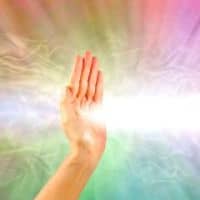 Pranic Healer: Pranic Healers employ a non-touch energy healing technique to cleanse, balance, and rejuvenate the body’s energy system. They collaborate with the body’s innate life force, or “prana”, to foster physical, emotional, and mental well-being.
Pranic Healer: Pranic Healers employ a non-touch energy healing technique to cleanse, balance, and rejuvenate the body’s energy system. They collaborate with the body’s innate life force, or “prana”, to foster physical, emotional, and mental well-being. Psychodrama Therapist: Psychodrama Therapists adopt a form of experiential therapy that comprises role-playing, improvisation, and dramatic enactment to aid clients in exploring their emotions, relationships, and experiences. They facilitate therapeutic sessions wherein clients can gain insights, resolve conflicts, and practice new behaviors.
Psychodrama Therapist: Psychodrama Therapists adopt a form of experiential therapy that comprises role-playing, improvisation, and dramatic enactment to aid clients in exploring their emotions, relationships, and experiences. They facilitate therapeutic sessions wherein clients can gain insights, resolve conflicts, and practice new behaviors.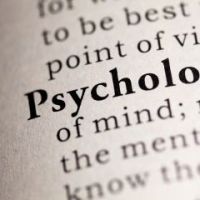 Psychosynthesis Practitioner: Psychosynthesis Practitioners apply a holistic method to psychotherapy, encompassing aspects of psychology, spirituality, and personal development. They guide clients in examining their inner landscape, cultivating self-awareness, and striving for an enhanced sense of harmony, equilibrium, and satisfaction.
Psychosynthesis Practitioner: Psychosynthesis Practitioners apply a holistic method to psychotherapy, encompassing aspects of psychology, spirituality, and personal development. They guide clients in examining their inner landscape, cultivating self-awareness, and striving for an enhanced sense of harmony, equilibrium, and satisfaction.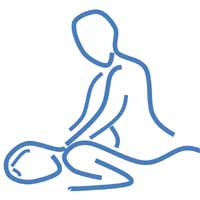 Physiotherapist: A Physiotherapist helps people affected by injury, illness, or disability through massage, heat treatment, stretch exercises, education, and advice rather than drugs or surgery. Also, they help patients to manage pain and prevent diseases.
Physiotherapist: A Physiotherapist helps people affected by injury, illness, or disability through massage, heat treatment, stretch exercises, education, and advice rather than drugs or surgery. Also, they help patients to manage pain and prevent diseases.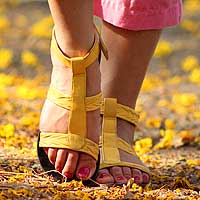 Podiatrist / Chiropodist: A podiatrist (aka Chiropodist) is a medical doctor devoted to the diagnosis and medical and surgical treatment of disorders of the foot, ankle, and lower extremities.The term podiatry came into existence only in the last century in the USA, and now it is widely used in UK and Australia.
Podiatrist / Chiropodist: A podiatrist (aka Chiropodist) is a medical doctor devoted to the diagnosis and medical and surgical treatment of disorders of the foot, ankle, and lower extremities.The term podiatry came into existence only in the last century in the USA, and now it is widely used in UK and Australia.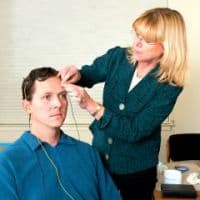 QEEG Neurofeedback Practitioner” QEEG Neurofeedback Practitioners employ cutting-edge brain-mapping technology to examine clients’ brainwave patterns and deliver real-time feedback to help train the brain to operate more optimally. They utilize this information to establish personalized neurofeedback protocols that tackle various cognitive, emotional, and behavioral concerns.
QEEG Neurofeedback Practitioner” QEEG Neurofeedback Practitioners employ cutting-edge brain-mapping technology to examine clients’ brainwave patterns and deliver real-time feedback to help train the brain to operate more optimally. They utilize this information to establish personalized neurofeedback protocols that tackle various cognitive, emotional, and behavioral concerns.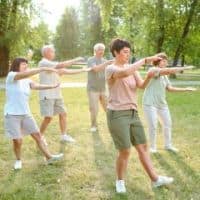 Qigong Practitioner” Qigong Practitioners teach a Chinese energy cultivation practice that combines gentle movement, breathwork, and meditation to balance and enhance the body’s vital energy, or “qi”. They guide clients through exercises that promote relaxation, stress reduction, and overall well-being.
Qigong Practitioner” Qigong Practitioners teach a Chinese energy cultivation practice that combines gentle movement, breathwork, and meditation to balance and enhance the body’s vital energy, or “qi”. They guide clients through exercises that promote relaxation, stress reduction, and overall well-being. Qoya Instructor: Qoya Instructors lead clients in a movement practice that combines dance, yoga, and feminine energy to promote self-expression, healing, and personal growth. Qoya classes encourage participants to connect with their bodies, explore their emotions, and cultivate deeper self-awareness and empowerment.
Qoya Instructor: Qoya Instructors lead clients in a movement practice that combines dance, yoga, and feminine energy to promote self-expression, healing, and personal growth. Qoya classes encourage participants to connect with their bodies, explore their emotions, and cultivate deeper self-awareness and empowerment.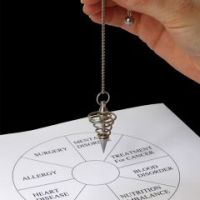 Radionics Practitioner: Radionics Practitioners utilize specialized instruments to detect and balance subtle energy frequencies within the body. They maintain that these energy imbalances can contribute to several physical, emotional, and mental health issues.
Radionics Practitioner: Radionics Practitioners utilize specialized instruments to detect and balance subtle energy frequencies within the body. They maintain that these energy imbalances can contribute to several physical, emotional, and mental health issues.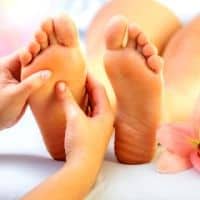 Reflexologist: Reflexologists administer pressure to specific points on the hands, feet, and sometimes ears, which they believe correspond to different organs and systems within the body. They aim to foster relaxation, enhance circulation, and bolster the body’s natural healing processes.
Reflexologist: Reflexologists administer pressure to specific points on the hands, feet, and sometimes ears, which they believe correspond to different organs and systems within the body. They aim to foster relaxation, enhance circulation, and bolster the body’s natural healing processes. Registered Massage Therapist: A Registered Massage Therapist (RMT) is a professional who has undergone additional training and education from recognized educational institutions in their jurisdiction and studied anatomy, physiology, pathology, physical assessment, neurology, treatments, and ethics to maintain the highest quality standards.
Registered Massage Therapist: A Registered Massage Therapist (RMT) is a professional who has undergone additional training and education from recognized educational institutions in their jurisdiction and studied anatomy, physiology, pathology, physical assessment, neurology, treatments, and ethics to maintain the highest quality standards.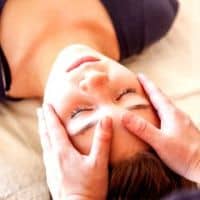 Reiki Practitioner: Reiki Practitioners employ a hands-on or hands-off healing technique to channel universal life force energy to clients, fostering relaxation, stress reduction, and self-healing. They balance the body’s energy centers, or chakras, to promote overall health and well-being.
Reiki Practitioner: Reiki Practitioners employ a hands-on or hands-off healing technique to channel universal life force energy to clients, fostering relaxation, stress reduction, and self-healing. They balance the body’s energy centers, or chakras, to promote overall health and well-being.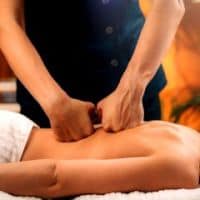 Rolfing Practitioner: Rolfing Practitioners utilize a form of deep-tissue bodywork to release tension, realign the body, and enhance posture and movement. They focus on manipulating the body’s connective tissue, or fascia, to establish more balance and ease in the body.
Rolfing Practitioner: Rolfing Practitioners utilize a form of deep-tissue bodywork to release tension, realign the body, and enhance posture and movement. They focus on manipulating the body’s connective tissue, or fascia, to establish more balance and ease in the body.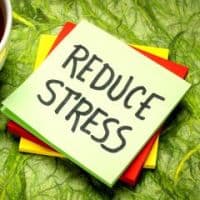 Rosen Method Practitioner: Rosen Method Practitioners use a gentle touch and verbal communication to help clients become more aware of their physical and emotional experiences. They focus on releasing unconscious muscle tension and emotional patterns held in the body.
Rosen Method Practitioner: Rosen Method Practitioners use a gentle touch and verbal communication to help clients become more aware of their physical and emotional experiences. They focus on releasing unconscious muscle tension and emotional patterns held in the body.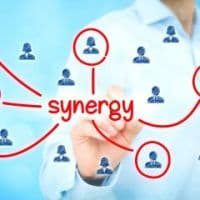 Rubenfeld Synergy Practitioner” Rubenfeld Synergy Practitioners use a combination of touch, movement, and talk therapy to help clients access and release stored emotions, beliefs, and memories within the body. They connect body, mind, emotions, and spirit to facilitate personal growth and transformation.
Rubenfeld Synergy Practitioner” Rubenfeld Synergy Practitioners use a combination of touch, movement, and talk therapy to help clients access and release stored emotions, beliefs, and memories within the body. They connect body, mind, emotions, and spirit to facilitate personal growth and transformation. Sandplay Therapist” Sandplay Therapists use a non-verbal, expressive therapy technique that involves clients creating scenes in a small sandbox using miniature figures and objects. They believe this creative process can help clients access and process unconscious material, resolve conflicts, and promote personal growth.
Sandplay Therapist” Sandplay Therapists use a non-verbal, expressive therapy technique that involves clients creating scenes in a small sandbox using miniature figures and objects. They believe this creative process can help clients access and process unconscious material, resolve conflicts, and promote personal growth. Satir TherapistSatir Therapists employ a humanistic, experiential approach to aid clients in enhancing their communication, relationships, and emotional well-being. They draw inspiration from the work of Virginia Satir, a pioneering family therapist, and concentrate on promoting clients’ self-awareness, self-esteem, and personal growth.
Satir TherapistSatir Therapists employ a humanistic, experiential approach to aid clients in enhancing their communication, relationships, and emotional well-being. They draw inspiration from the work of Virginia Satir, a pioneering family therapist, and concentrate on promoting clients’ self-awareness, self-esteem, and personal growth.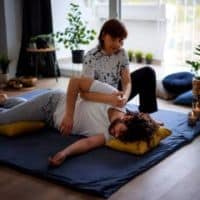 Shiatsu Practitioner: Shiatsu Practitioners use a form of Japanese bodywork that combines pressure, stretching, and joint mobilization techniques to balance the body’s energy and promote overall health. They work with the body’s meridian system, which is believed to be the pathway through which life force energy, or “qi” flows.
Shiatsu Practitioner: Shiatsu Practitioners use a form of Japanese bodywork that combines pressure, stretching, and joint mobilization techniques to balance the body’s energy and promote overall health. They work with the body’s meridian system, which is believed to be the pathway through which life force energy, or “qi” flows.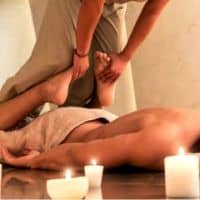 Thai Massage Practitioner: Thai Massage Practitioners execute a distinct form of bodywork that blends stretching, acupressure, and yoga-like movements. By maneuvering clients’ bodies and applying pressure to specific points, they aim to relieve tension, enhance flexibility, and encourage relaxation and overall well-being.
Thai Massage Practitioner: Thai Massage Practitioners execute a distinct form of bodywork that blends stretching, acupressure, and yoga-like movements. By maneuvering clients’ bodies and applying pressure to specific points, they aim to relieve tension, enhance flexibility, and encourage relaxation and overall well-being. Therapeutic Horseback Riding Instructor: Therapeutic Horseback Riding Instructors offer equine-assisted activities and therapies for individuals facing physical, emotional, or cognitive challenges. Engaging with and riding horses can provide numerous advantages, such as improved balance, coordination, self-confidence, and communication abilities.
Therapeutic Horseback Riding Instructor: Therapeutic Horseback Riding Instructors offer equine-assisted activities and therapies for individuals facing physical, emotional, or cognitive challenges. Engaging with and riding horses can provide numerous advantages, such as improved balance, coordination, self-confidence, and communication abilities. Trager Approach Practitioner: Trager Approach Practitioners employ tender, non-intrusive bodywork to enhance clients’ physical and emotional health by easing tension and encouraging relaxation. Utilizing a mix of gentle, rhythmic motions and attentive touch, they assist clients in gaining a deeper understanding of their bodies and the way they move. This heightened awareness improves flexibility, decreases discomfort, and improves overall well-being.
Trager Approach Practitioner: Trager Approach Practitioners employ tender, non-intrusive bodywork to enhance clients’ physical and emotional health by easing tension and encouraging relaxation. Utilizing a mix of gentle, rhythmic motions and attentive touch, they assist clients in gaining a deeper understanding of their bodies and the way they move. This heightened awareness improves flexibility, decreases discomfort, and improves overall well-being. Traditional Chinese Medicine Practitioner (TCM): \ TCM Practitioners use a holistic approach to health and healing rooted in ancient Chinese philosophy and practices. They may employ various techniques, such as acupuncture, herbal medicine, cupping, or moxibustion, to address clients’ health concerns and promote overall well-being.
Traditional Chinese Medicine Practitioner (TCM): \ TCM Practitioners use a holistic approach to health and healing rooted in ancient Chinese philosophy and practices. They may employ various techniques, such as acupuncture, herbal medicine, cupping, or moxibustion, to address clients’ health concerns and promote overall well-being. Transactional Analysis (TA) : Therapist Transactional Analysis (TA) Therapists apply a psychoanalytic method to assist clients in comprehending their communication and behavioral habits and how these influence their relationships and emotional health. Concentrating on examining clients’ interactions with others, these therapists aim to instruct clients in adopting more efficient communication styles and fostering healthier connections.
Transactional Analysis (TA) : Therapist Transactional Analysis (TA) Therapists apply a psychoanalytic method to assist clients in comprehending their communication and behavioral habits and how these influence their relationships and emotional health. Concentrating on examining clients’ interactions with others, these therapists aim to instruct clients in adopting more efficient communication styles and fostering healthier connections. Trauma-Informed Yoga InstructorTrauma-Informed Yoga Instructors teach yoga techniques specifically tailored to support individuals who have undergone trauma. Their focus is establishing a secure, nurturing environment where clients can delve into movement, breathing, and mindfulness practices to mend the mind-body connection and foster overall wellness.
Trauma-Informed Yoga InstructorTrauma-Informed Yoga Instructors teach yoga techniques specifically tailored to support individuals who have undergone trauma. Their focus is establishing a secure, nurturing environment where clients can delve into movement, breathing, and mindfulness practices to mend the mind-body connection and foster overall wellness. Transpersonal Therapist: Transpersonal Therapists employ a comprehensive, integrative method to support clients in examining and healing their psychological, emotional, and spiritual dimensions, contributing to overall wellness and personal advancement. They might utilize various techniques, including meditation, breathwork, or guided visualization, to foster clients’ self-awareness, emotional recovery, and spiritual growth.
Transpersonal Therapist: Transpersonal Therapists employ a comprehensive, integrative method to support clients in examining and healing their psychological, emotional, and spiritual dimensions, contributing to overall wellness and personal advancement. They might utilize various techniques, including meditation, breathwork, or guided visualization, to foster clients’ self-awareness, emotional recovery, and spiritual growth.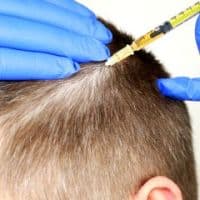 Trichologist: Trichologists are experts in studying and treating hair and scalp disorders. They diagnose and address conditions like hair loss, scalp irritation, and dandruff using scientific understanding and hands-on experience.
Trichologist: Trichologists are experts in studying and treating hair and scalp disorders. They diagnose and address conditions like hair loss, scalp irritation, and dandruff using scientific understanding and hands-on experience.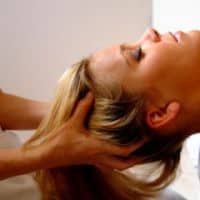 Upledger CranioSacral Therapy Practitioner: Upledger CranioSacral Therapy Practitioners adopt a gentle, hands-on method to alleviate deep-seated tensions within the body, centering on the craniosacral system, which comprises the membranes and fluid encasing the brain and spinal cord. This therapy can help relieve pain and dysfunction and boost overall health by bolstering the body’s innate healing mechanisms.
Upledger CranioSacral Therapy Practitioner: Upledger CranioSacral Therapy Practitioners adopt a gentle, hands-on method to alleviate deep-seated tensions within the body, centering on the craniosacral system, which comprises the membranes and fluid encasing the brain and spinal cord. This therapy can help relieve pain and dysfunction and boost overall health by bolstering the body’s innate healing mechanisms.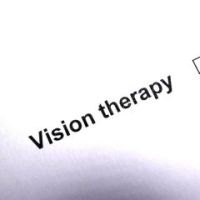 Vision Therapy Practitioner: Vision Therapy Practitioners, often optometrists or ophthalmologists, use exercises and techniques to help patients improve their visual skills and correct eye movement, focusing, and teaming issues.
Vision Therapy Practitioner: Vision Therapy Practitioners, often optometrists or ophthalmologists, use exercises and techniques to help patients improve their visual skills and correct eye movement, focusing, and teaming issues. Voice Dialogue Facilitator Voice Dialogue Facilitators use a process that helps clients explore and integrate various aspects or “sub-personalities” within themselves, promoting self-awareness, personal growth, and psychological well-being. They guide clients in dialogues with these different aspects, allowing them to gain new perspectives and create greater life balance.
Voice Dialogue Facilitator Voice Dialogue Facilitators use a process that helps clients explore and integrate various aspects or “sub-personalities” within themselves, promoting self-awareness, personal growth, and psychological well-being. They guide clients in dialogues with these different aspects, allowing them to gain new perspectives and create greater life balance.
Whether they work in their clinics, public hospitals, or communities, doctors aim to help keep people to the best of their well-being. But the list above only goes to show how vast the scope of the field of medicine is.
THIS THE END OF OUR LIST! SEND US YOURS!
